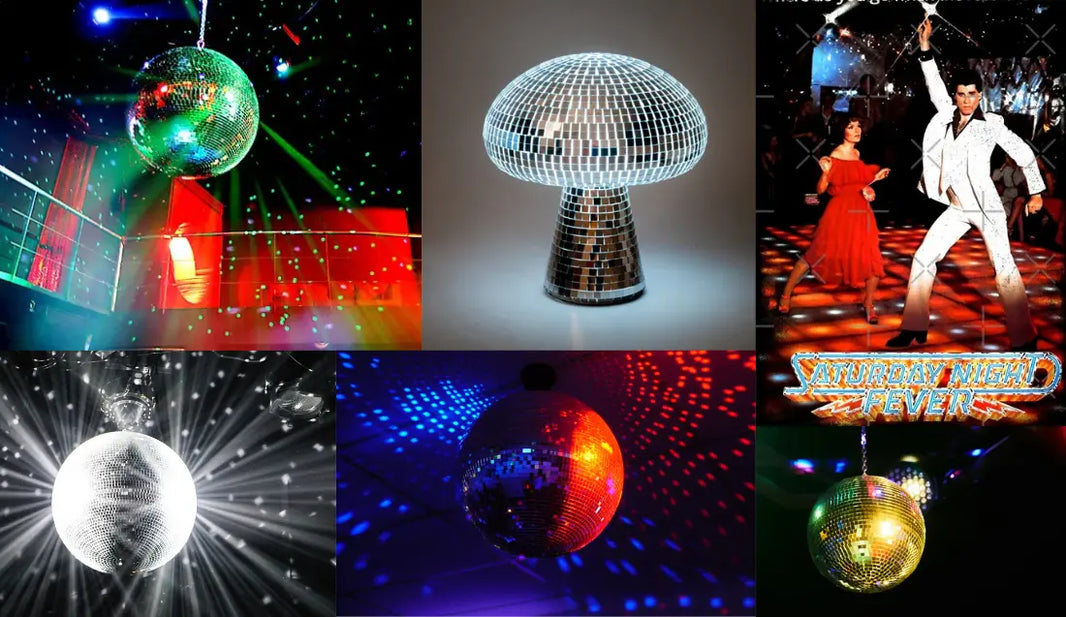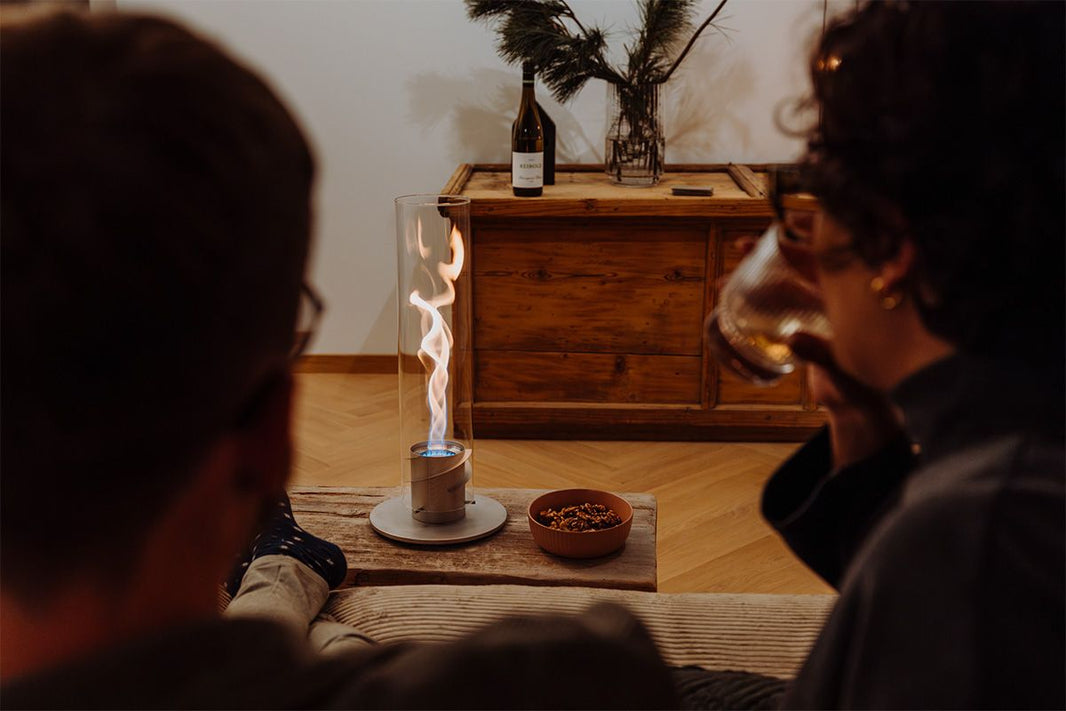What is the origin of disco balls?
An essential symbol of dance parties and discos, the mirror ball instantly evokes the sparkle of a lively dance floor and the effervescent atmosphere of the disco years. Discover the fascinating origins of this legendary object, which has become much more than a simple decorative accessory.

Are you dreaming of a disco ball? Discover all our models.
What is a disco ball? 🪩
A mirror ball (also called a mirror ball or disco ball) is a spherical object covered in hundreds or even thousands of small pieces of mirror. It is designed to reflect light in all directions when illuminated, creating a sparkling and dynamic effect.

Mirror balls, or disco balls, are generally made to hang from the ceiling. As their name suggests, they are most often spherical and made of plastic or metal. The body of the object (under the facets) is very often made of frigolite.
What is the origin of the disco ball?
Mirror balls, often associated with dance floors and disco music, have a more ancient origin than you might think! Here's a look at their history:
- Origins in the 19th century:
The concept of the reflective ball dates back to the late 1800s. Early versions, called " mirrored balls," were used in theaters and balls to produce a spectacular lighting effect.
They were covered with small pieces of mirror glued to a metal or papier-mâché sphere.
Are you dreaming of a disco ball? Discover all our models.
Desired effect : Their goal was to produce a magical atmosphere by scattering light in all directions, mesmerizing spectators long before the electrical age.

- 1920s and cabarets :
The mirror ball gained popularity in cabarets and jazz clubs during the 1920s, particularly in Europe and the United States.
Its shine helped create a festive atmosphere by projecting reflections of light throughout the room.
The mirror balls matched the extravagance and festive atmosphere of the Roaring Twenties. Their play of light accentuated the glamour of the evenings.

- 1950s-1960s: Transition to modern clubs:
After a temporary decline, mirror balls began to reappear in dance clubs in the early 1950s. Before they really
- Peak with disco (1970s-1980s) :
Mirror balls became an iconic symbol of disco music in the 1970s.
They were ubiquitous in nightclubs, where they amplified the party atmosphere. The film Saturday Night Fever (1977) solidified their place in popular culture. 🪩

- Contemporary use :
Today, disco balls are still used in clubs, at parties and in nostalgic or artistic events. They embody a mix of retro glamour and modernity. They also seem to be making a comeback with the different trends launched by social networks.
Are you dying to have your own disco ball? Discover all our models.
Timeless object that is part of popular culture and back in fashion
So, although they are often associated with the disco era, mirror balls have stood the test of time, bringing their luminous magic to every possible context! 🪩
Are you interested in Pop Culture? Discover my article dedicated to this vast and fascinating subject.

A timeless symbol
Disco balls are not just luminous objects: they embody a festive atmosphere, a rich history and a unique aesthetic that transcends eras and musical genres. They have become much more than an accessory, a true cultural symbol. 🪩✨
 The disco ball comes in an infinite number of shapes. Here, a hanging flower pot !
The disco ball comes in an infinite number of shapes. Here, a hanging flower pot !
This mushroom-shaped faceted lamp is a good example of how popular disco balls are. Love it? Check it out here.
Where to install a disco ball?
Installing a disco ball requires choosing a strategic location to maximize its lighting effect and create a festive atmosphere. Here are some suggestions for ideal locations and tips for its installation!

On the ceiling, in the center of the room…
Classic placement: Hanging the disco ball from the ceiling, in the center of the room, is the most common location (and the most traditional way to do it!). This allows the light reflections to spread evenly across the walls and floor.
Ideal for:
The dance floors.
Indoor parties or events.
Tip: Use a rotary motor to spin the ball and amplify the dynamic effect.

…and close to a light source
The mirror ball does not produce light by itself, it must be illuminated by a spotlight or directed light. Place it in a space where a spotlight can be aimed directly at it.
Tip: Use colored spotlights to vary the reflections and personalize the atmosphere.
Do you want to change the atmosphere of your interior with a disco ball? Discover all our models.
In an artistic or decorative corner
Install it as a decorative element, even when it is not lit.
Ideal for:
- Retro style living rooms.
- Bars or lounge areas.
- Shop windows or artistic installations.
Tip: Play with other accessories like fairy lights to complete the ambiance.

In a room dedicated to dance or fitness
In a dance studio or gym for fitness sessions or dance classes. It brings a dynamic touch that motivates and immerses participants in an immersive atmosphere.
Practical tips for installation:
- Safety: Secure the ball securely with a sturdy hook or chain to prevent it from falling.
- Height: Hang it high enough so that it does not interfere with movement in the room.
- Light positioning: direct the light so that the reflections reach all available surfaces.
Once installed, your disco ball will instantly transform the atmosphere, whether it's for a memorable party or a space with retro-chic charm. 🪩✨
Do you like iconic decorative accessories like the disco ball? Check out my article on lava lamps!
Conclusion
The disco ball, with its timeless sparkle, is much more than just a light accessory. A symbol of celebration, creativity and gathering, whether on a dance floor or as the centrepiece of a retro decor, it continues to captivate minds. Crossing the ages, from cabarets of the past to modern clubs, it embodies a festive tradition that is constantly reinventing itself.











